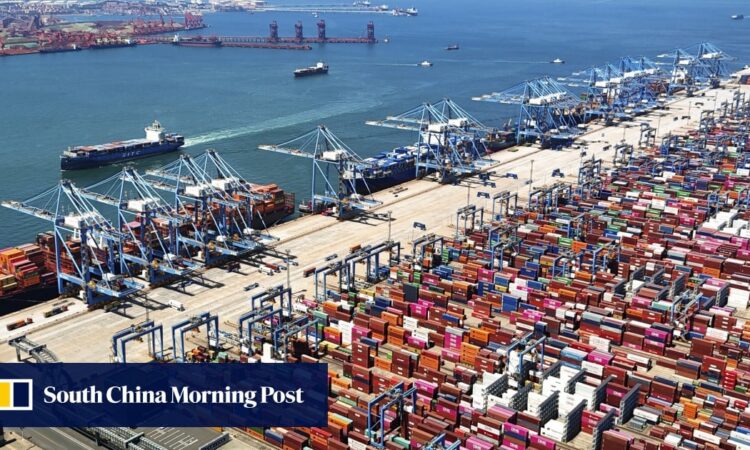
Junyu Tan, a regional economist for North Asia with credit insurance company Coface, said China’s exports in May expanded due to a lower base from the previous year, while shipments of cars, ships and electronics “remained solid”.
“This month’s export data shows strong performance, continuing the robust export trend seen over the past four months, and China’s economy is primarily driven by exports,” said Gary Ng, senior economist at Natixis Corporate and Investment Bank.
“The rapid growth in exports to Asean is mainly benefiting from the shift in the industrial chain, with most of these products ultimately destined for the United States.”
There is also growing concern about overcapacity and geopolitics, which may bring further headwinds in 2025 and beyond
Within May’s export data, the value of car shipments rose in May by 16.63 per cent, year on year, with the volume also growing by 29.9 per cent, while the value of ship exports surged by 57.1 per cent.
Exports of integrated circuits also rose by 28.47 per cent by value last month compared with a year earlier, while the value of shipments of hi-tech products rose by 8.1 per cent.
“Exports have become a rare cyclical driver, stabilising China’s economic growth in 2024 supported by strong global demand in electronics and green tech. Such a rebound will remain apparent in the coming months, bringing export growth to 6 per cent or above,” Ng added.
“However, there is also growing concern about overcapacity and geopolitics, which may bring further headwinds in 2025 and beyond.”
“However, China’s products remain highly competitive, whether in hi-tech or labour-intensive sectors. China needs to enhance its industrial chain layout in more emerging markets and even consider relocating parts of the industrial chain to the US or Europe,” he said.
“China’s cross-border e-commerce is also performing well; these are typically small trades that generally do not incur additional tariffs.
“However, it remains to be seen whether the EU and the US will impose tariffs on them in the future.”
Shipments to the US reported their first year-on-year rise since March, having increased by 3.6 per cent in May.
Exports to the EU, meanwhile, fell by 1 per cent in May compared with a year earlier.
We remain cautious about the trade outlook for the second half of the year and expect its contribution to growth to decline
“By export product, the trends from the year to date continued. Auto exports continued to be a source of strength,” said Lynn Song, chief economist for Greater China at ING.
“With the US tariffs on electric vehicles coming into effect in August, and reports of EU provisional tariffs also to take effect in July, we could see a pre-emptive boost to exports in next month’s data, but auto-export growth could slow later in the year.
“However, looking ahead, the trade environment is likely to continue to see headwinds as tariffs are implemented. If these tariffs are very aggressive, with the market often looking at 50 per cent plus tariffs as a threshold to watch, there is potential for retaliation and an escalation of trade friction.
“We remain cautious about the trade outlook for the second half of the year and expect its contribution to growth to decline.”
Imports, meanwhile, rose by 1.8 per cent from a year earlier, compared with an 8.4 per cent increase in April.
“China’s trade data reflects the cyclical recovery in exports and the still challenging domestic-demand situation,” added Ng at Natixis Corporate and Investment Bank.
“China’s lingering real estate problem and weak consumer confidence will continue to weigh on import growth.”
Elsewhere, China’s trade surplus stood at US$82.6 billion in May, compared with US$72.4 billion in April.
“The trade data came out in the direction we were expecting, with exports rebounding and imports slowing,” added Song at ING. “While export growth was in line with our forecasts, imports came in weaker than expected, which resulted in a better-than-expected trade surplus for the month.
“Overall, May’s data is supportive for this year’s second-quarter GDP growth, as the trade balance came in a little stronger than expected.”






